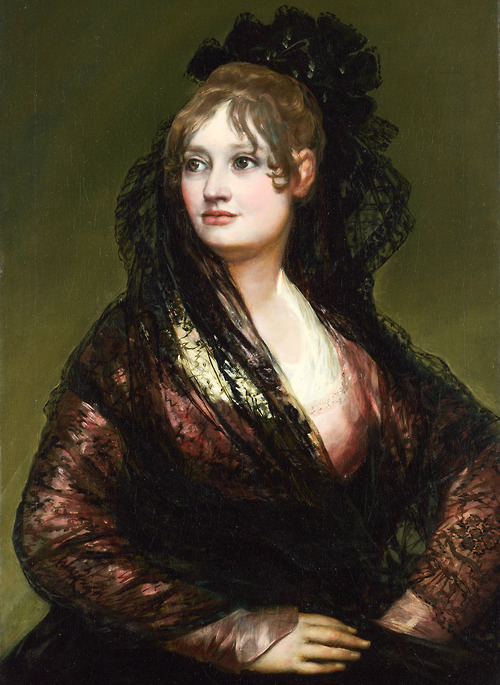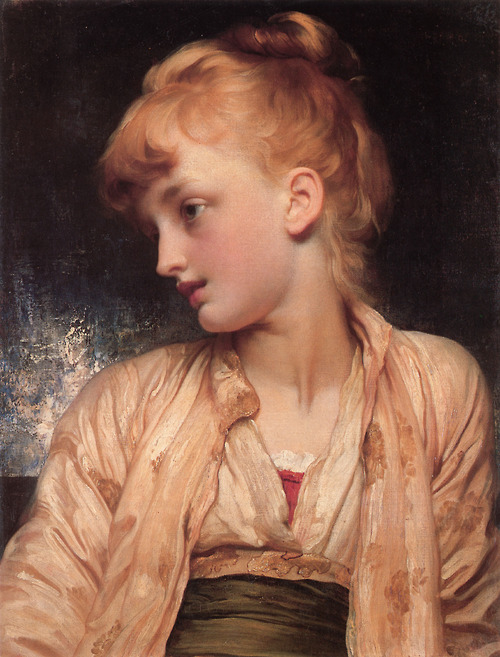Mar 13, 2013 | art fairs, painting
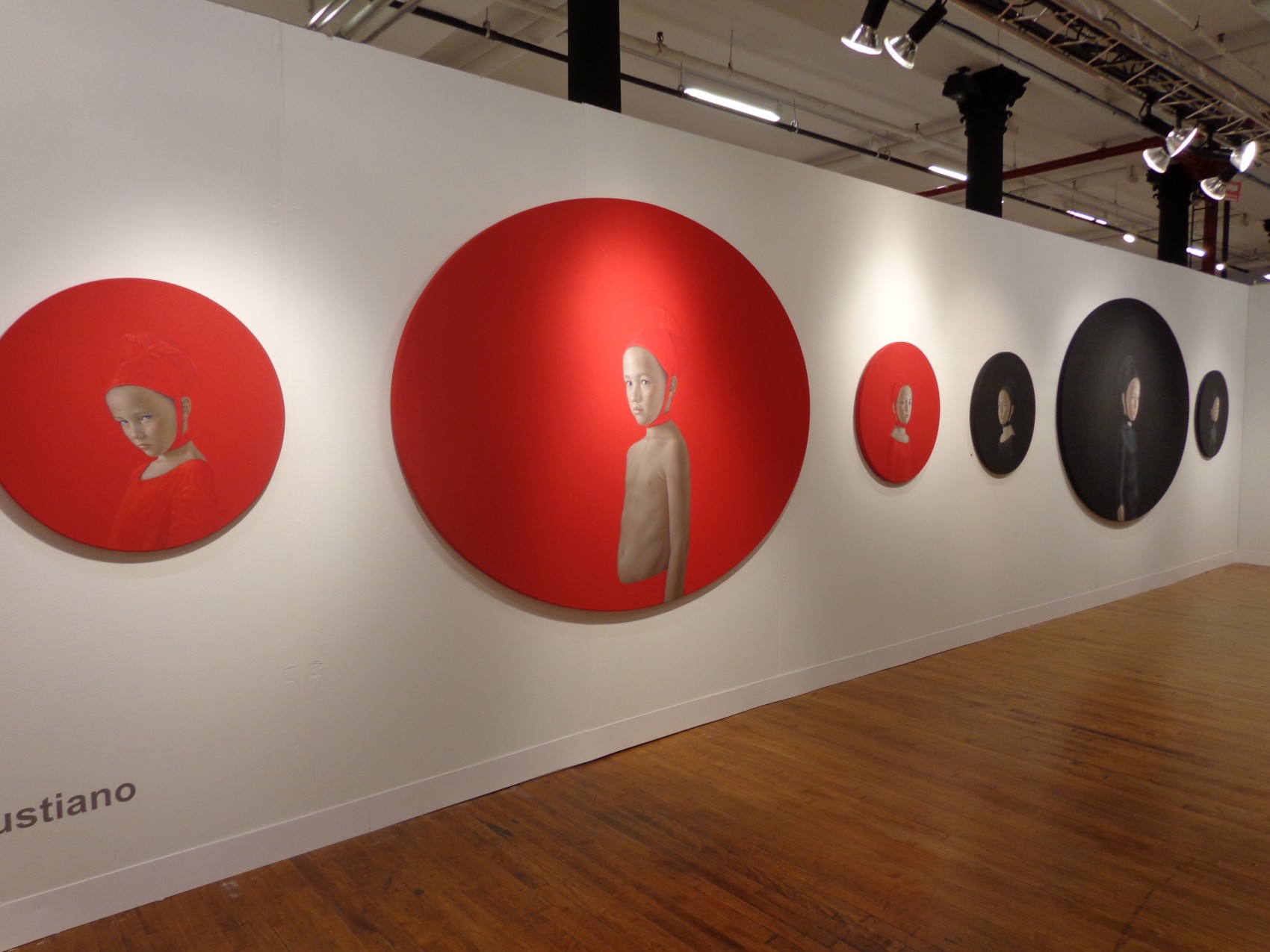
It’s arresting – seeing six symmetrical circles holding the faces of little scowling children, all spread across the wall, three red paired against three black. Cast in Renaissance clothing, these children wear the exact color of the background, making the definition between the two an act of magic. Your eyes tell you where the headdress stops and where her shirt begins, but they only know because of delicate shadows and folds that are obvious in some places, but left invisible where the painted fabric is as tight as the canvas.
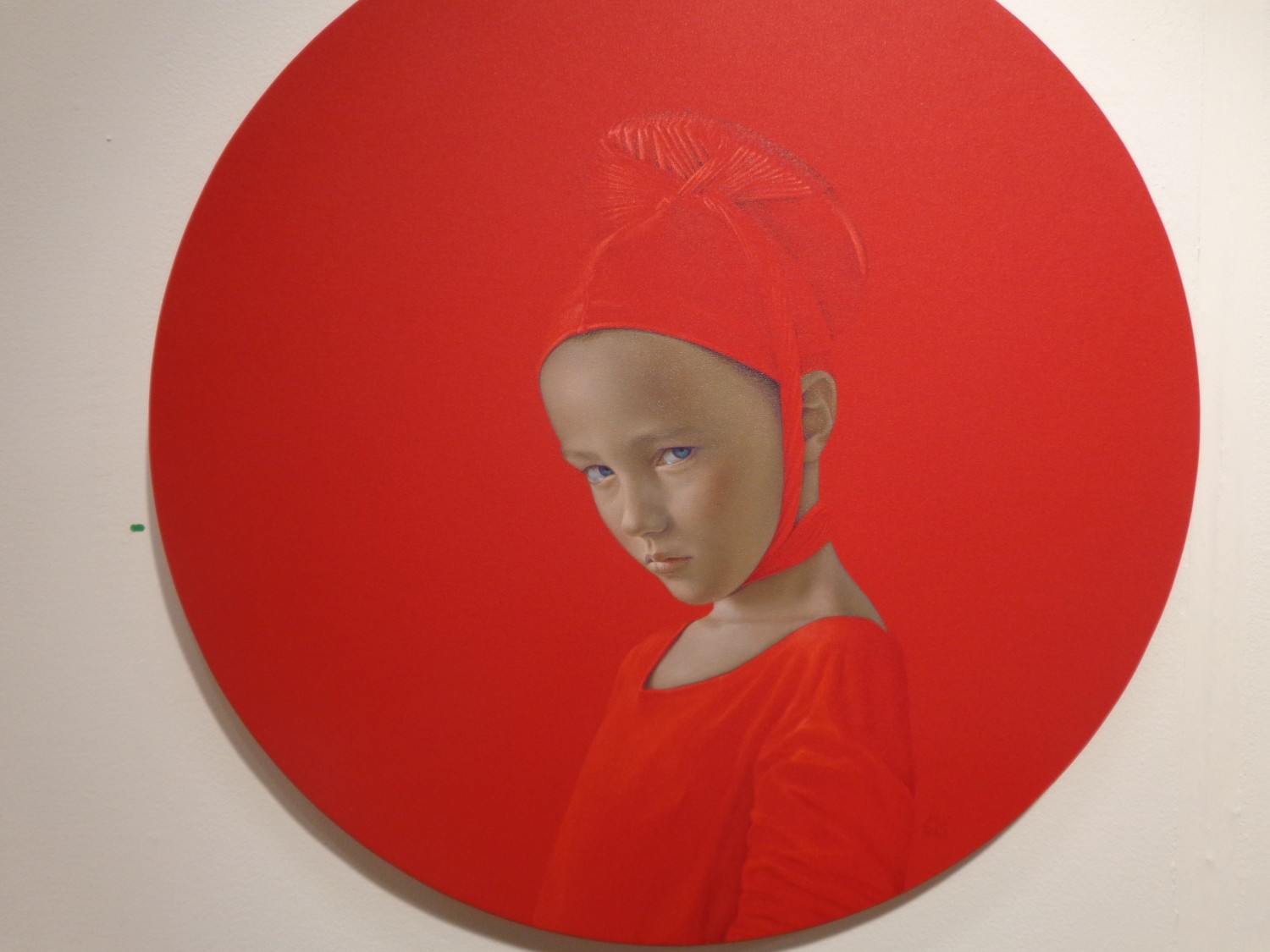
It’s hard to tell whether these are all the same little boy or girl – all of their faces have the same elegant roundness, the same crystal blue eyes and the same smooth perfect skin. But their expressions are subtly different – the four within the smaller circles seem to hold more contempt in their eyes, like they’re upset with how small their worlds are compared to the two children within the larger circles, whose expressions lie closer to curiosity or suspicion.
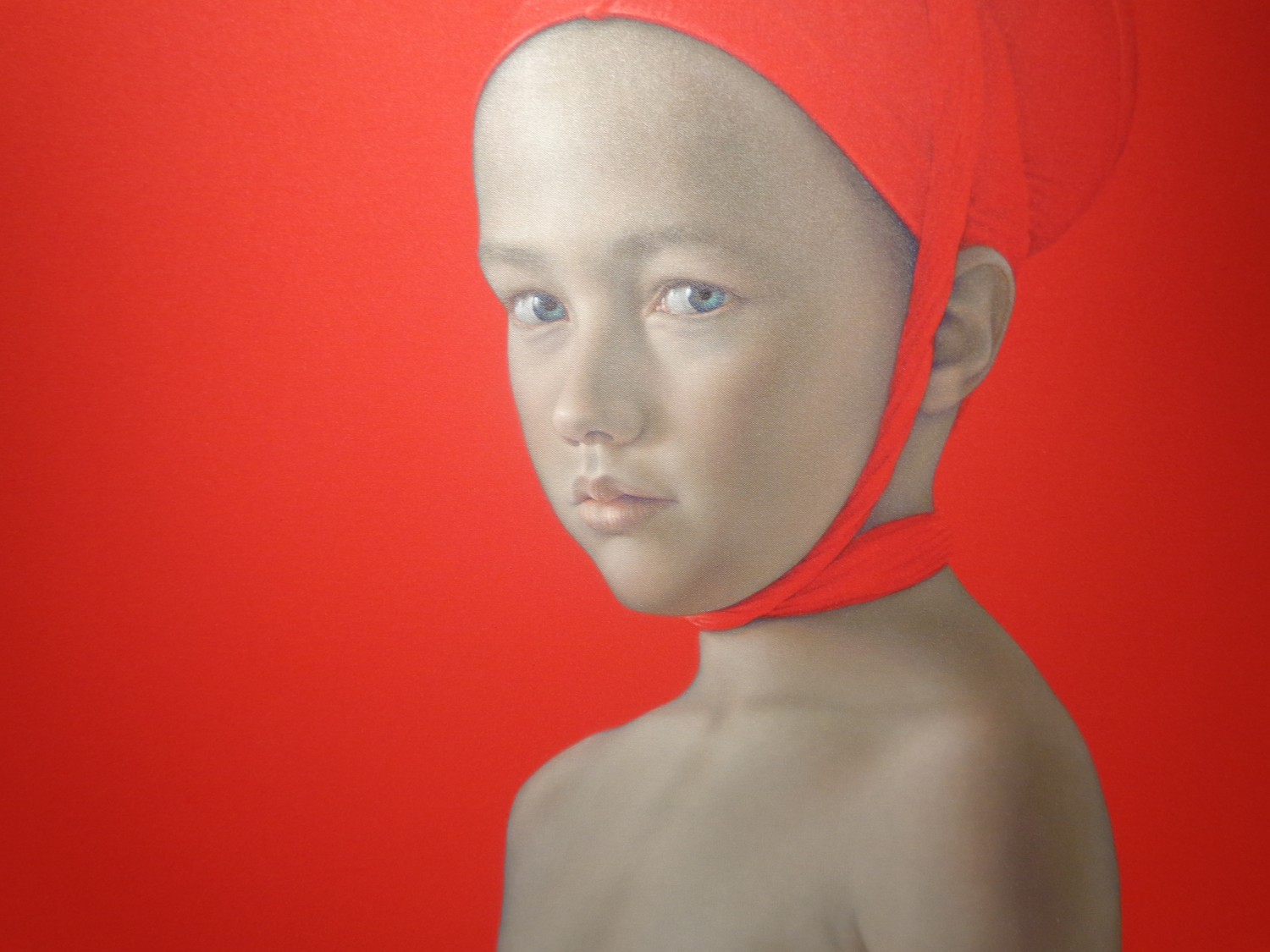
The only element offsetting perfect symmetry here comes in the clothing of these two children within the largest circles. The boy in red is bare-chested, wearing only a headdress while the child in the large black oval wears a shiny black shirt that grips his little body so tight he might as well not be wearing it at all.
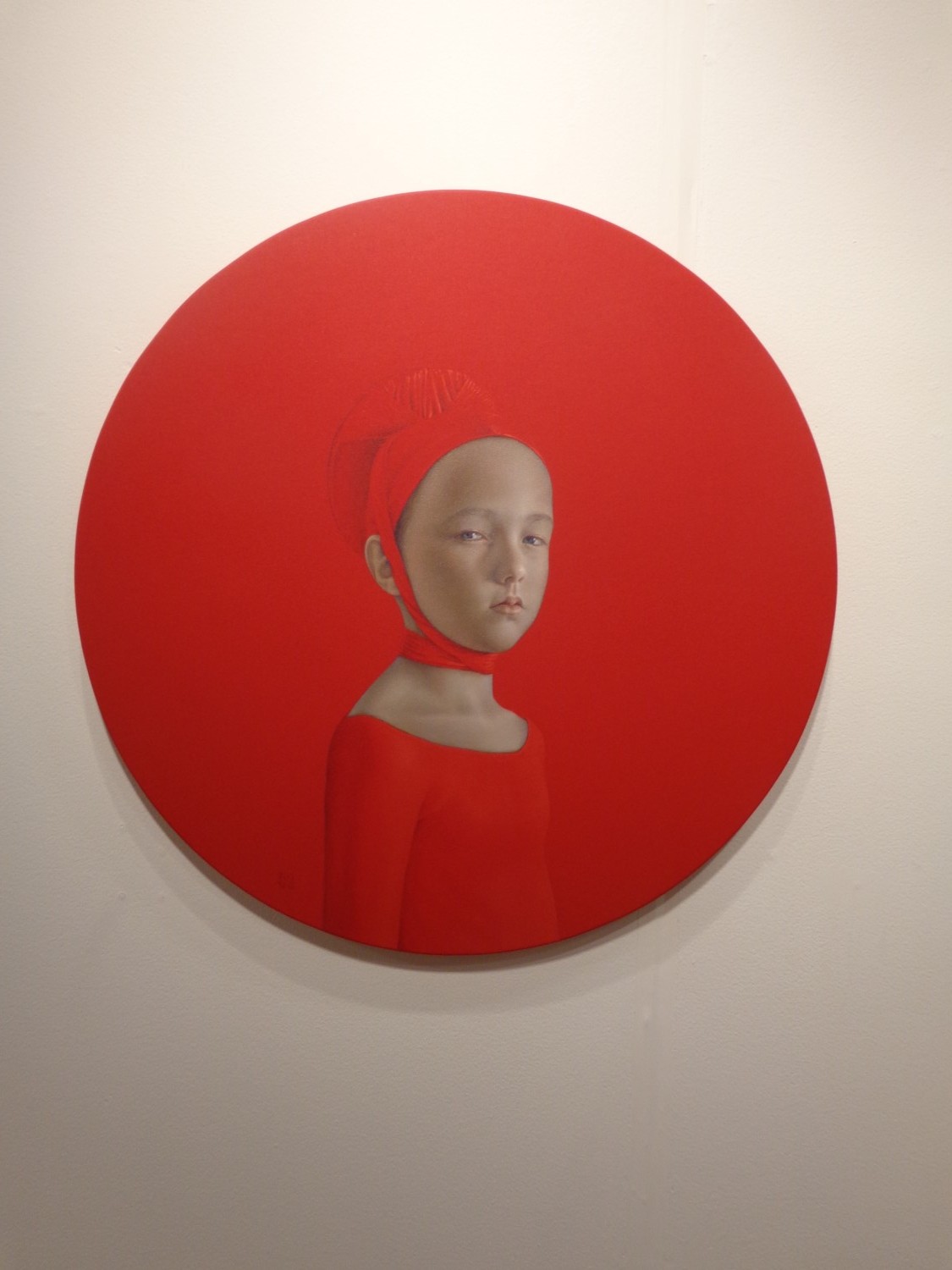
The largest circles are stretched wider to form more of an oval shape – the smaller perfect circles play a supporting role by framing their larger counterpart and interacting with the opposite color across the wall. The abrupt visual contrast of the black versus red, along with the dagger stares coming from intense perfect children makes the whole wall come alive with ideas about conflict and disdain, youth and maturity. And the Renaissance headdresses hint at an address of institutionalized religion or just religion as a whole.
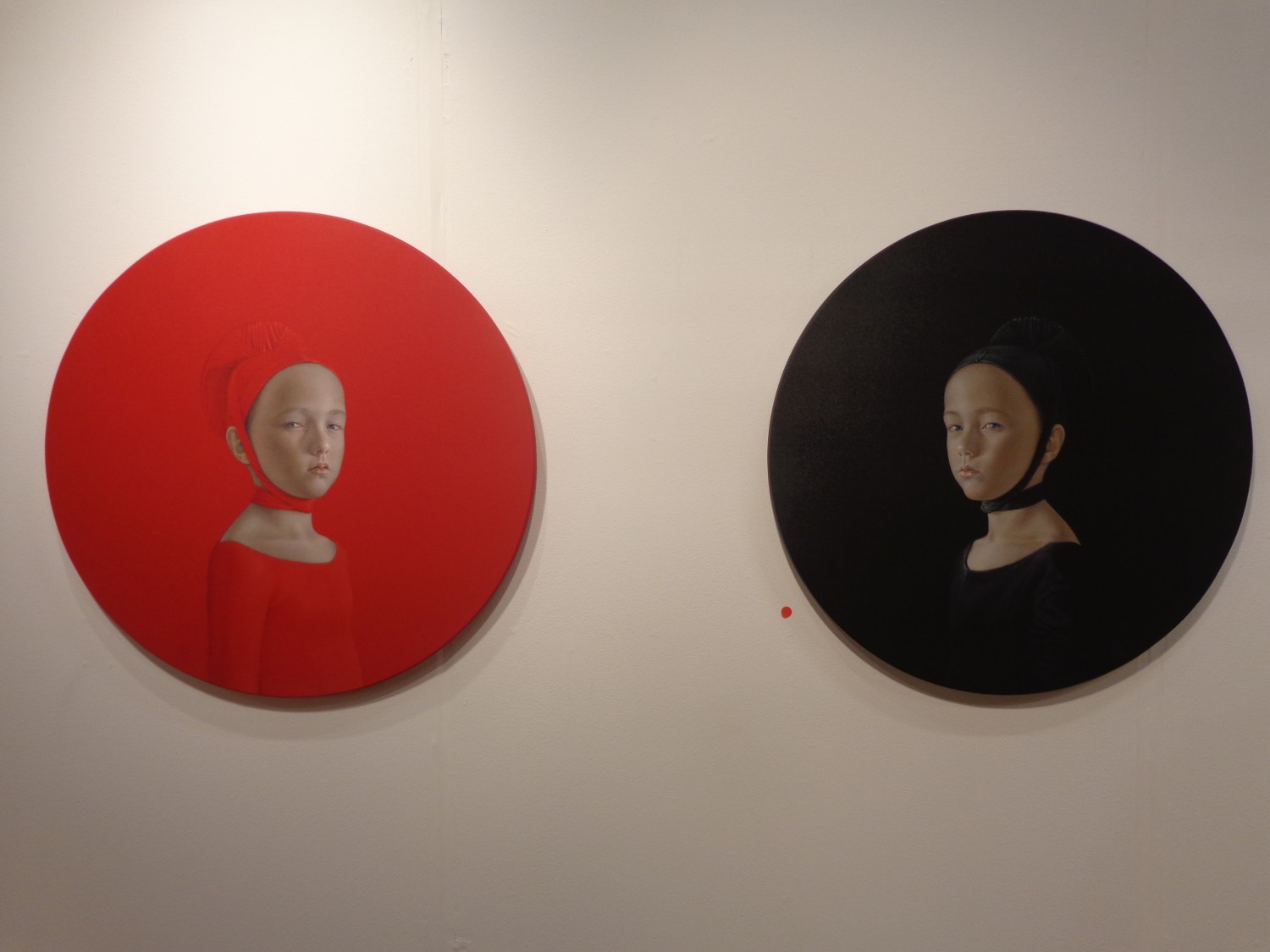
Perhaps the most dynamic part comes where the two colors meet – both children with the exact same grimacing glare pointed right at us, although it really seems like their unhappiness is actually rooted in their physical closeness to the antidote – the opposite color with a contrast too strong to look directly at.
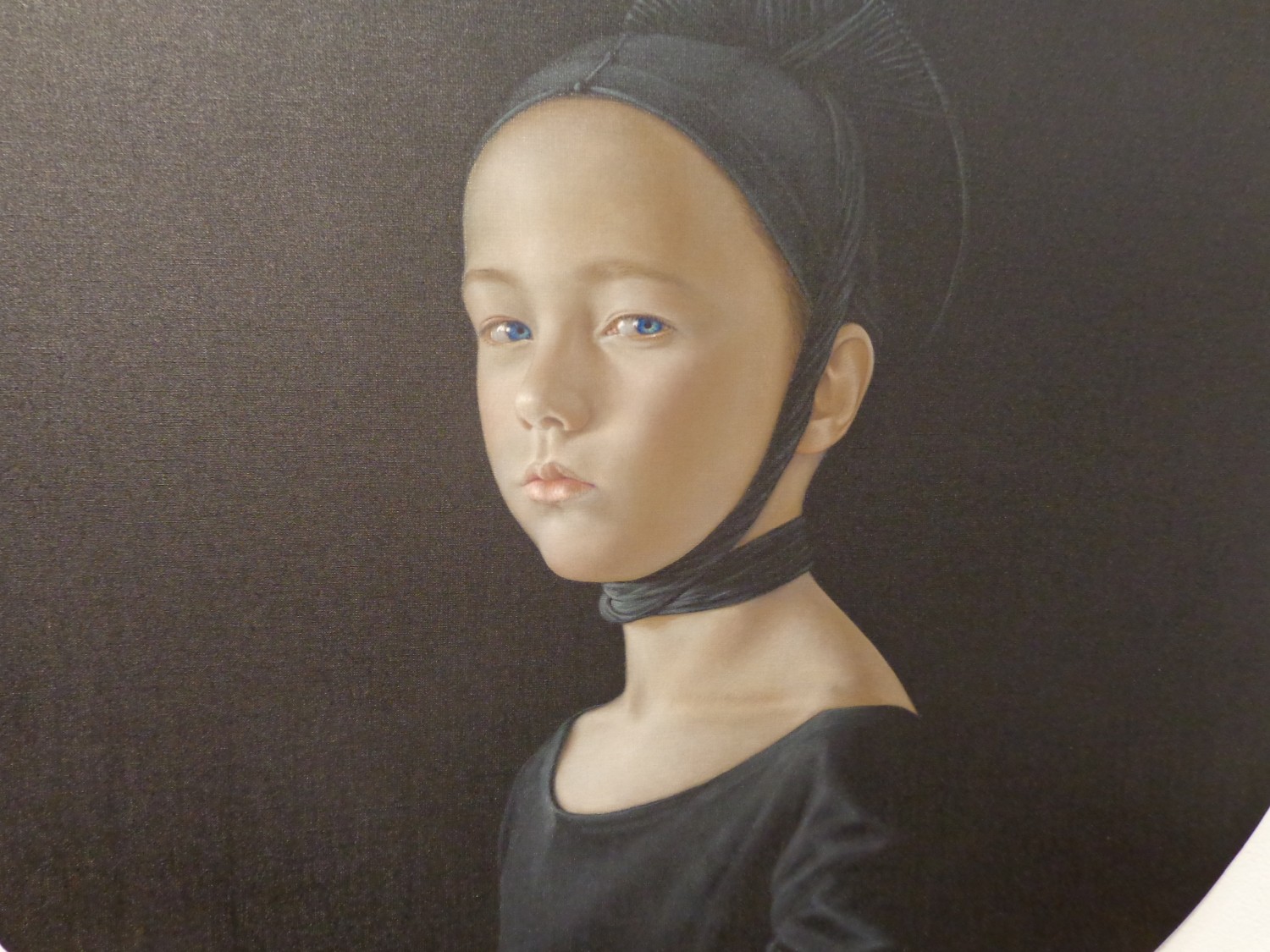
Born in Seville, Spain in 1965, Salustiano has an exhibition list too long for even multiple pages on his website. He’s shown between 10-20 exhibitions per year since 2001, and began all the way back in 1994. Beginning in Spain, then moving to Portugal in 1999, he showed in Italy in 2000 and New York City in 2001, and has since had work displayed all over the world, from Seoul to Salzburg to Moscow.
Salustiano’s VOLTA comment read:
“For me, emotion is a key word in contemporary art and should continue to be so in the future. In recent years in the art world, artists have tried to flee from ’emotion’: saturated with every kind of visual stimulus, they have been more concerned with making an ‘impact’ on the spectator than in touching an emotional fibre. I strongly believe that emotion should be the principal motivation and purpose of the artist. For centuries art has emotionally impacted upon, moved or even perturbed the spectator; and this ‘interior’ movement has contributed to the evolution of mankind. I also think that even if the artist intends to stimulate the intellect of his or her audience, then this should be done through ’emotion’….”
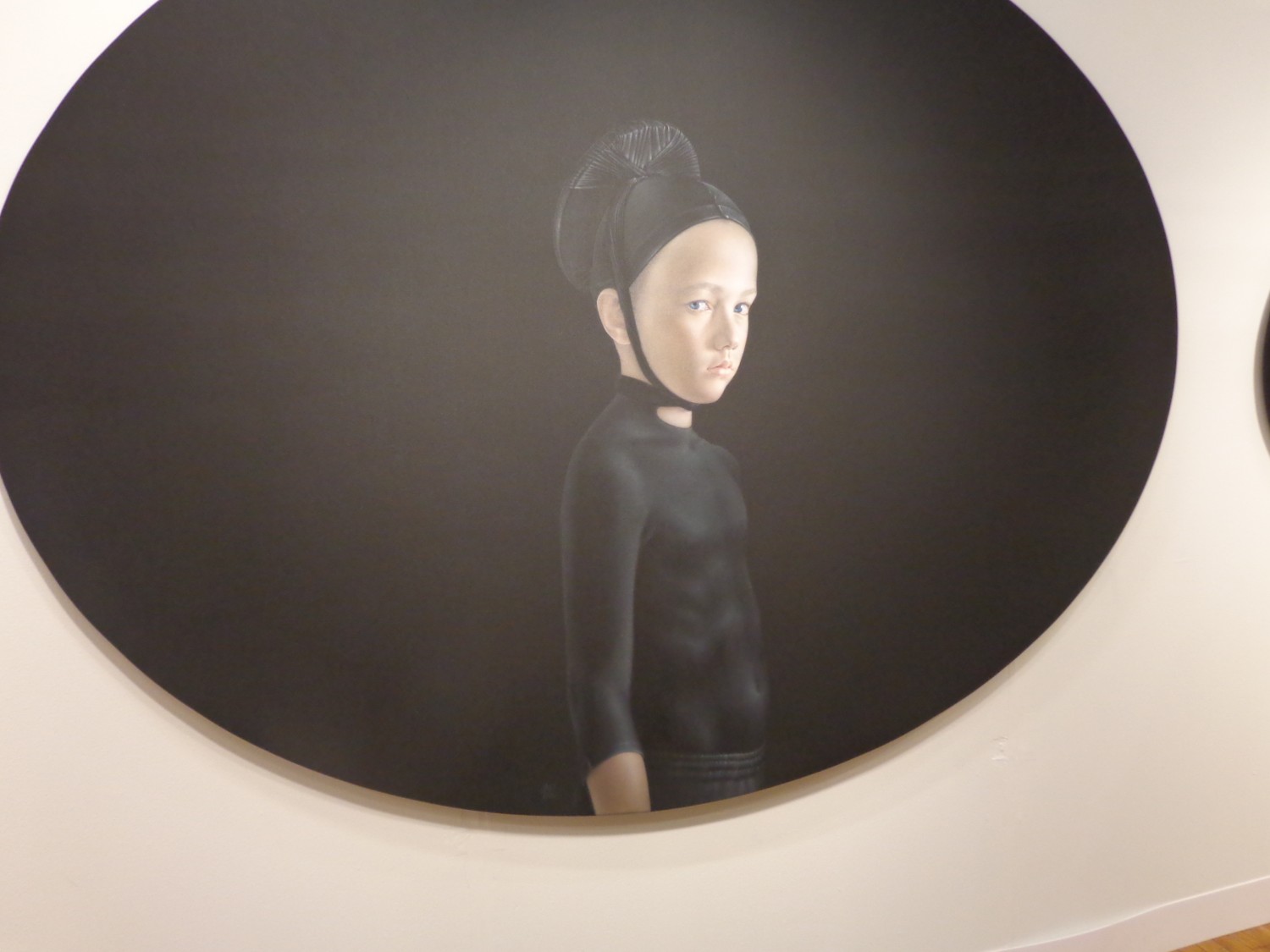
For more of Salustiano’s work, see his website.
All photographs taken by Lindsey @VOLTA NY ’13 where Salustiano was represented by KAVACHNINA CONTEMPORARY in Miami.
Mar 12, 2013 | installation, painting
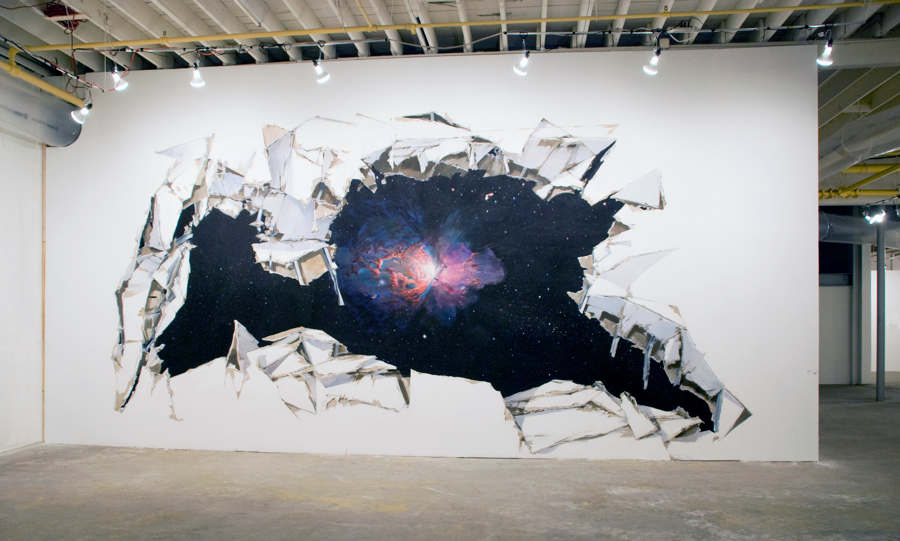
“Stardust,” 2010.
flash acrylic paint on tyvek
12 x 30 feet (144 x 360 inches) Image from artist’s website.
“Stardust” is a flash of make-believe, tricking your eyes into seeing something only found through a very powerful telescope or on the background of a Mac. The wall is painted like its falling apart, crumbling to reveal the image that’s breaking through behind. A star appears to be exploding – mid-transition on its way to becoming a white dwarf or a black hole – something other than what it used to be. With an asymmetrical form glowing bright, white light springs from the center while the rest of it shines red through the clouds that cover it.
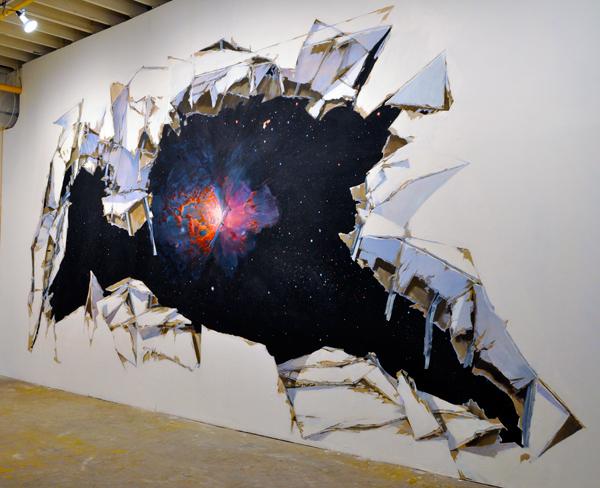
Image via Slow Show.
Adam Cvijanovic is a 54-year-old artist born in Cambridge, MA and now living in New York City. His work has been featured in the New York Times, Time Out NY, the New Yorker, along with ArtSlant, ARTnews, and Art Forum. He is currently represented by Postmasters Gallery in New York, and according to his CV he was continuously creating and exhibiting work from the mid-eighties until 2010, but hasn’t publicized making anything since.
For more of Adam’s work, see his Postmasters profile.
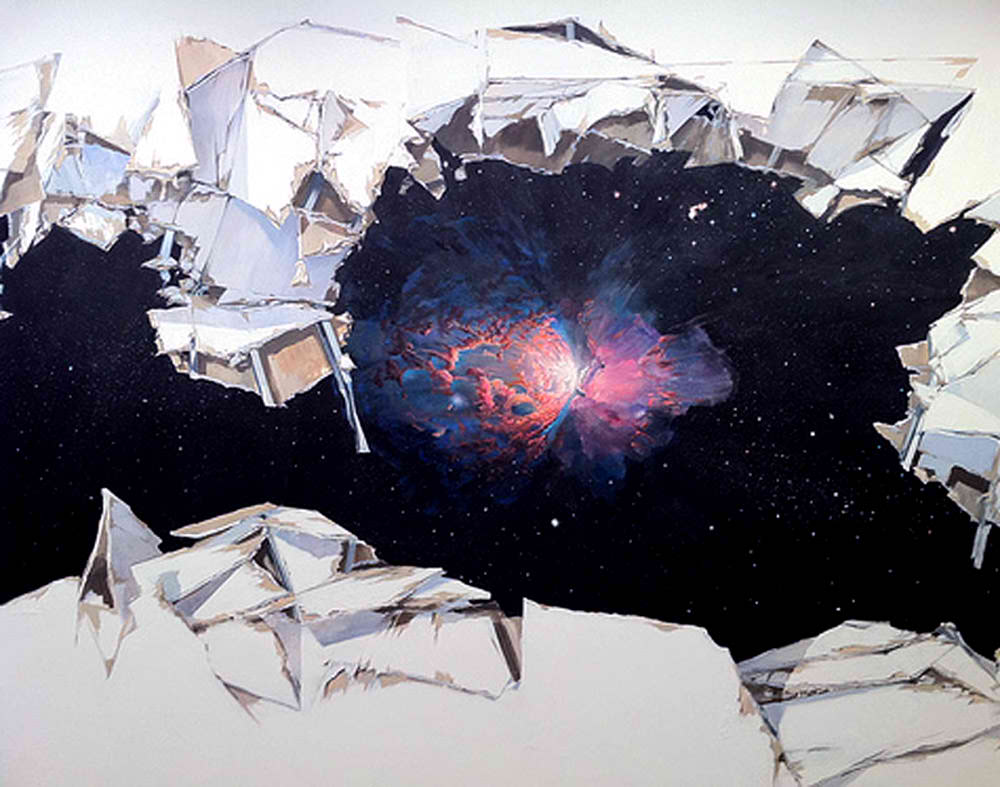
Image via Slow Show.
Mar 11, 2013 | inspiration
Art would exist so differently now if we didn’t have women to inspire it. Even sensitive undertones within the harshest paintings calm the piece as a whole. Soft skin, wide eyes, and flowing hair make for an aesthetic image, so portraits of beautiful women done well will always be beautiful. Women and art went hand in hand for the longest time because both largely existed just to look at.
But in a society where the intellectually evolved recognize a woman’s worth, these paintings from the past take on more meaning than a simple pretty picture or pretty person. What about her life is lost to history when just the image of what she looked like survives? If these women were around today, what would they be able to contribute now? How much knowledge did the world miss out on because it took so long for so many groups of people to prove their equality?
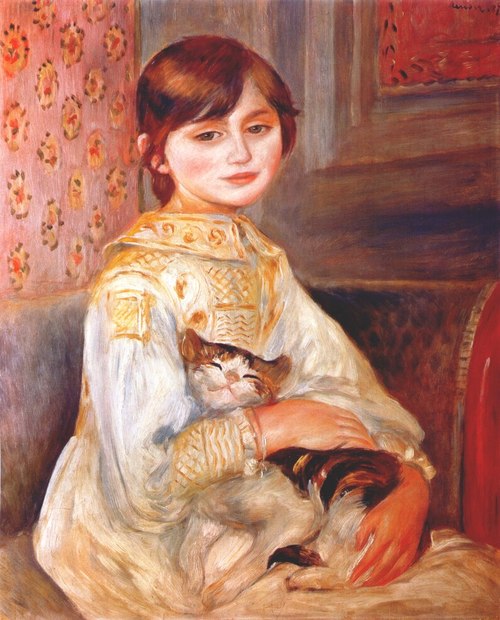
Pierre Auguste Renoir.
“Julie Manet” also known as “Child with cat,” 1887
Oil on canvas.
Image via Mata Mua.
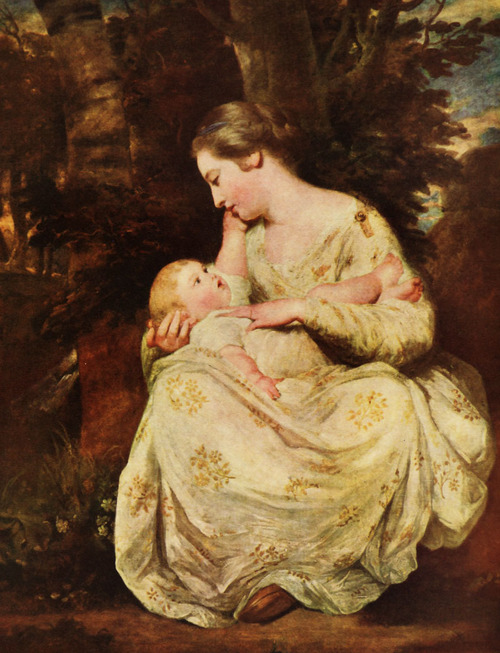
Sir Joshua Reynolds. “Mrs. Susanna Hoare and Child,” 1763.
Image via Jaded Mandarin.
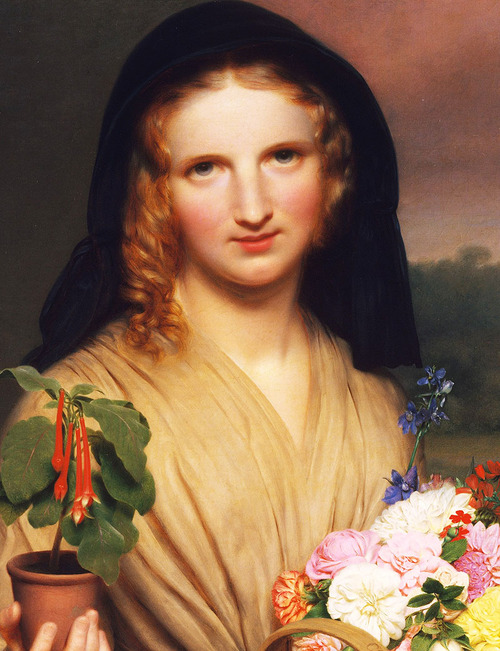
Charles Cromwell Ingham. Detail from “The Flower Girl,” 1846.
Image via Jaded Mandarin.
Mar 8, 2013 | interviews, painting
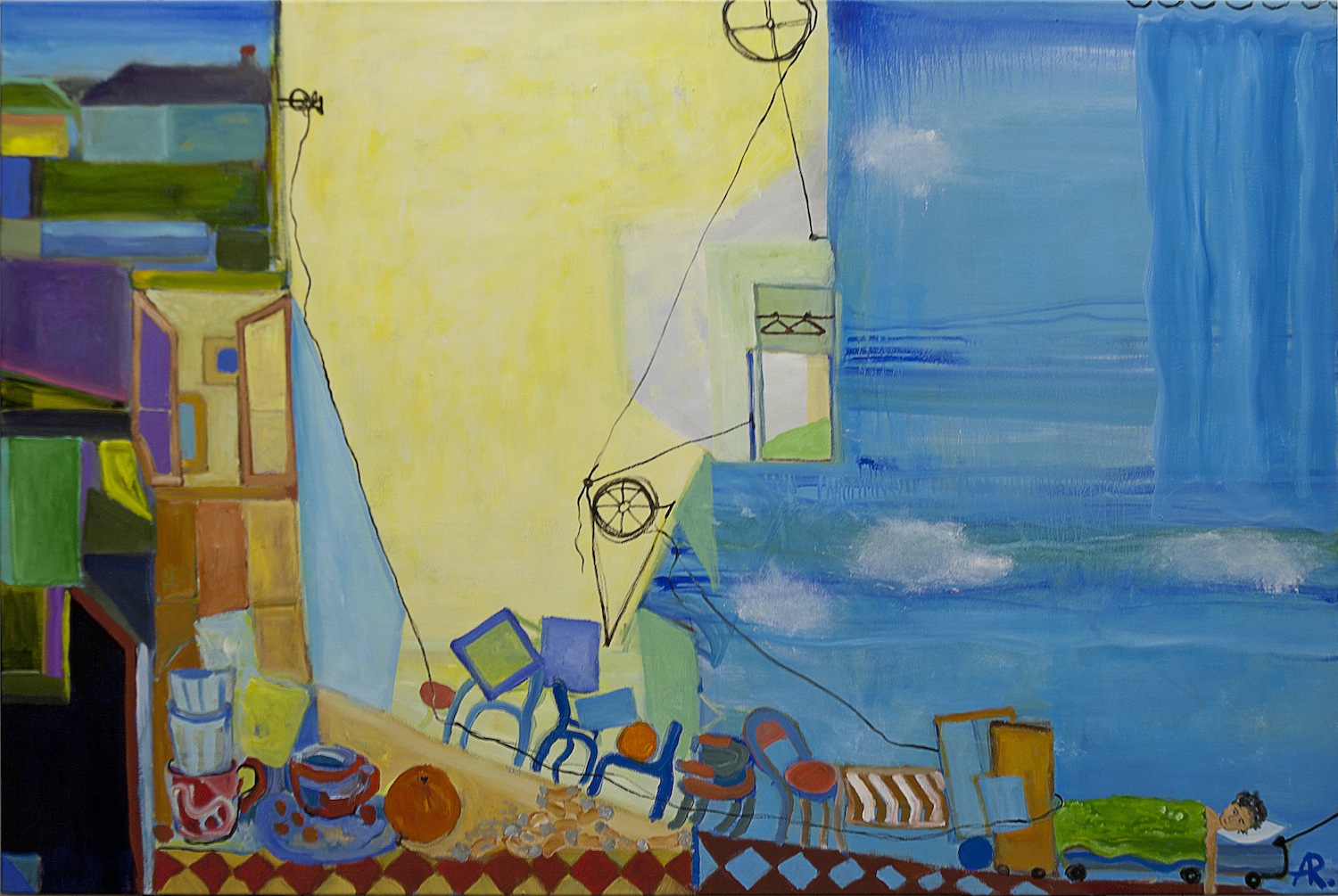
“Moving in with Richard Diebenkorn”
Alexandra Rozenman is an artist now living and working in New England after coming to America as a political refugee from Moscow at the end of the 80s. Her paintings reveal simple scenes of beauty and most often peace – a utopia so perfect that it could only exist within four walls of canvas. Her new show, “Transplanted” continues her exploration of scenic storytelling, using color and shape to serve as a narrative for each viewer to interpret on their own.
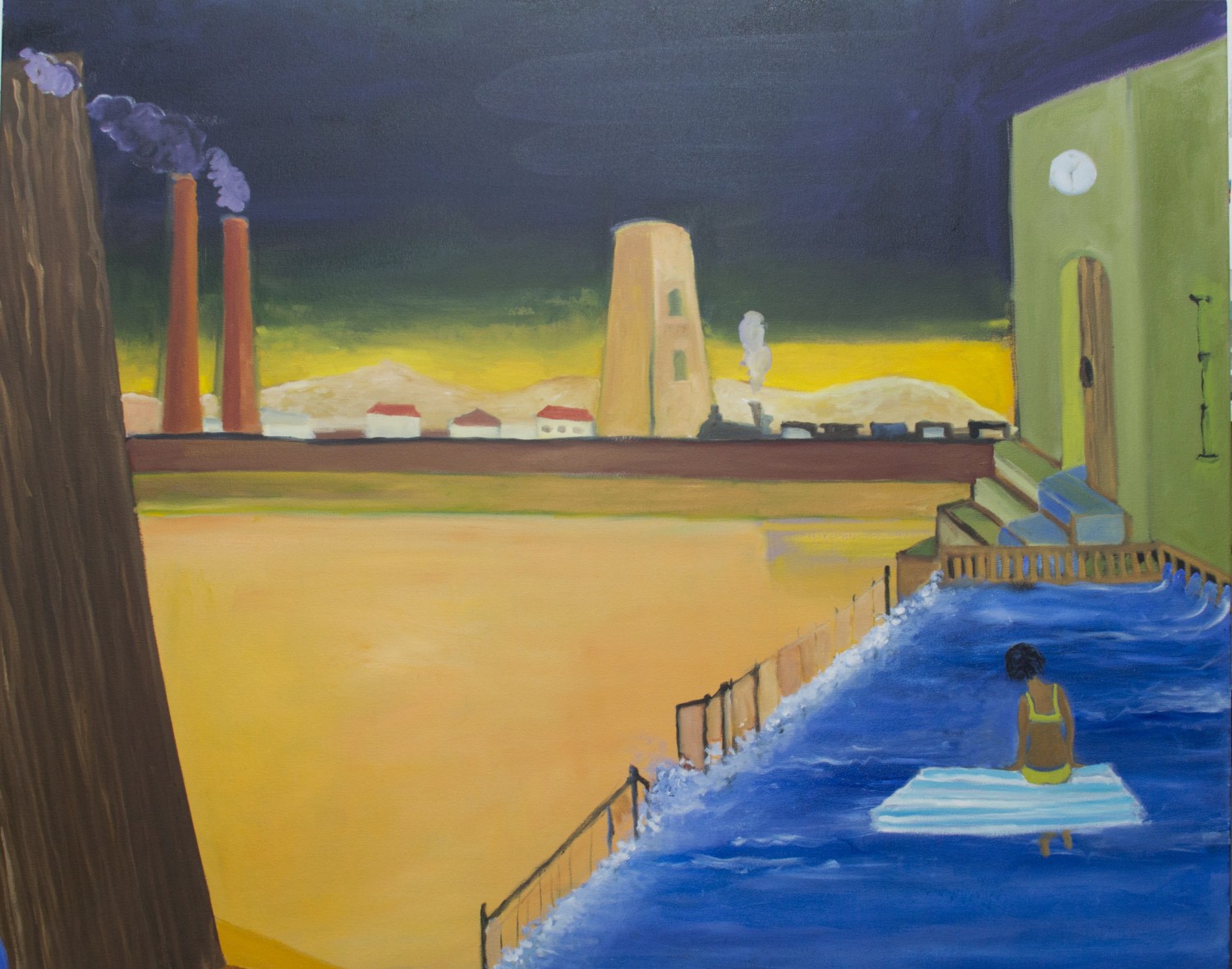
“Moving in with de Chirico”l art
What was the first thing you can remember painting?
I started painting when I was 5 taking classes at the Fine Art Museum in Moscow. There is a photograph taken at the dacha that my parents rented in 1977 for the summer. I am sitting at the easel looking very serious. Painting on an easel tells a story the same way my work does now: there is a house in the woods and a fairytale character: Petrushka ! ( Petrushka is a stock character of Russian folk puppetry, known at least since 17th century). I would not be surprised if I found out about him from a Stravinsky ballet that has the same name, because may be there was not always paper, but the theater was affordable, wonderful and available. This painting has two big eyes in the sky – one of the images in my work for the last 20 years.
Do you have any routines required for the creation of your work?
In ideal world I prefer to work in the morning after 2-3 cups of strong black tea. Afterwards I eat good lunch and have a nap! Then work for 2-3 hours more. I like to feel alienated when I work. I like listening to a very loud music (something nobody will guess I do). With the schedule I have right now ( I started my own private art school www.artschool99.com) and am teaching almost every day for 5 hours or so). I am trying to cut out pieces of time for myself and just make it work. A tight schedule became one of my art materials:)
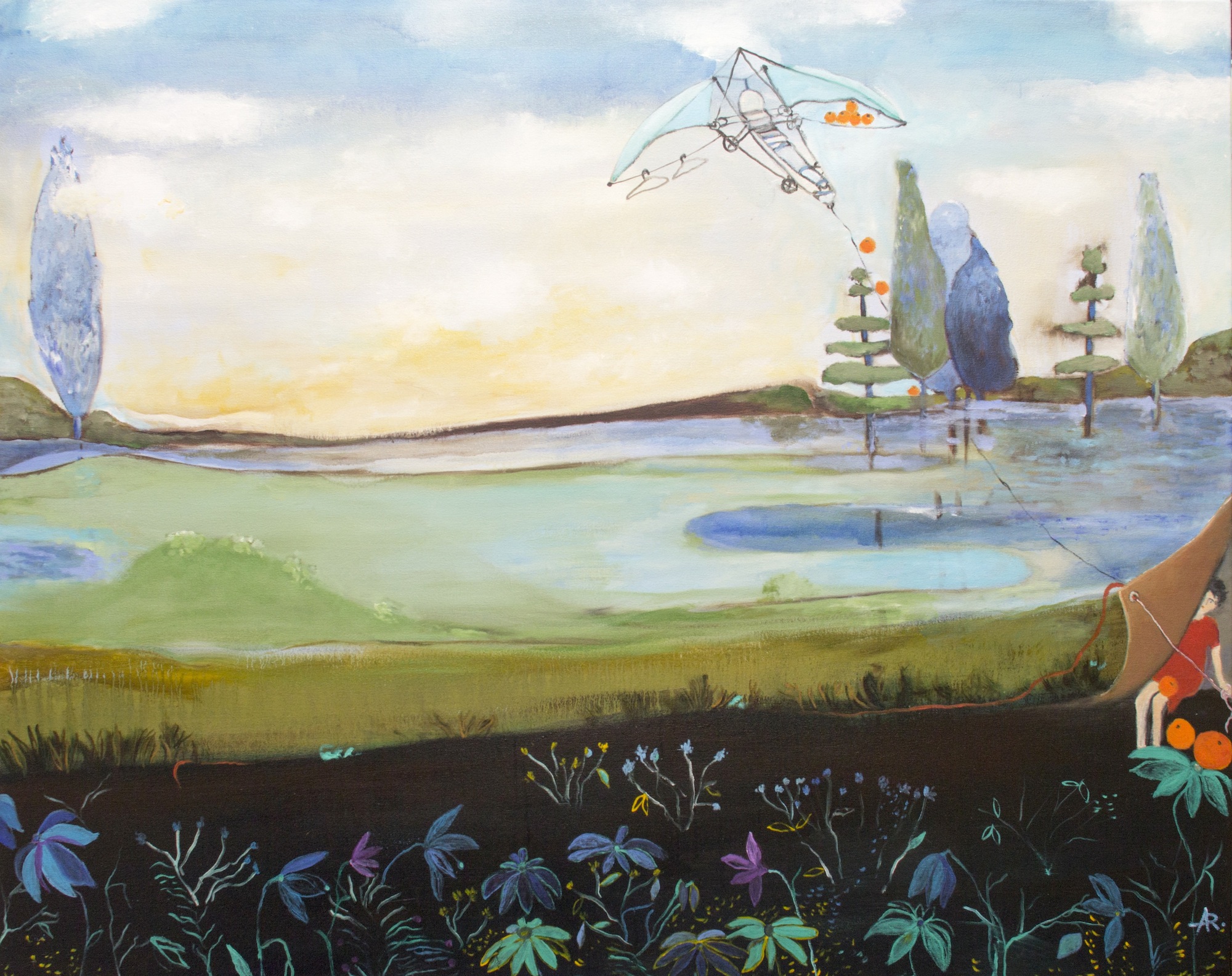
“Moving in with Leonardo”
How do you find the right color scheme for each scene?
I don’t think I find the right color. I allow colors to find me. Paint floats and has its own mind based on subject matter, technique, materials, time, space. It is alive for me and my goal is to allow it to grow up (like a plant) and only later – some time in the middle of the painting process – start changing it, based on my instinct, ideas and goals. Each painting is different.
Where do you hope to take the viewer with your paintings, and why?
I tell my viewer a story, allow them to enter into the world of magic and hope that they will get curious and will spend some time thinking and looking around. My work expresses longing for understanding and being understood, for non-belonging and finding a place to be. Playfulness in my work points to instability of life – visually, culturally and literally. I am working playing on the conflicts between identity and assimilation, tradition and modernity, so each viewer can take my messages and interpret them any way they want and discover for themselves. I want the viewer to start wondering after looking at my paintings, if maybe things are a bit different sometimes, maybe something can still be both beautiful and interesting at the same time.
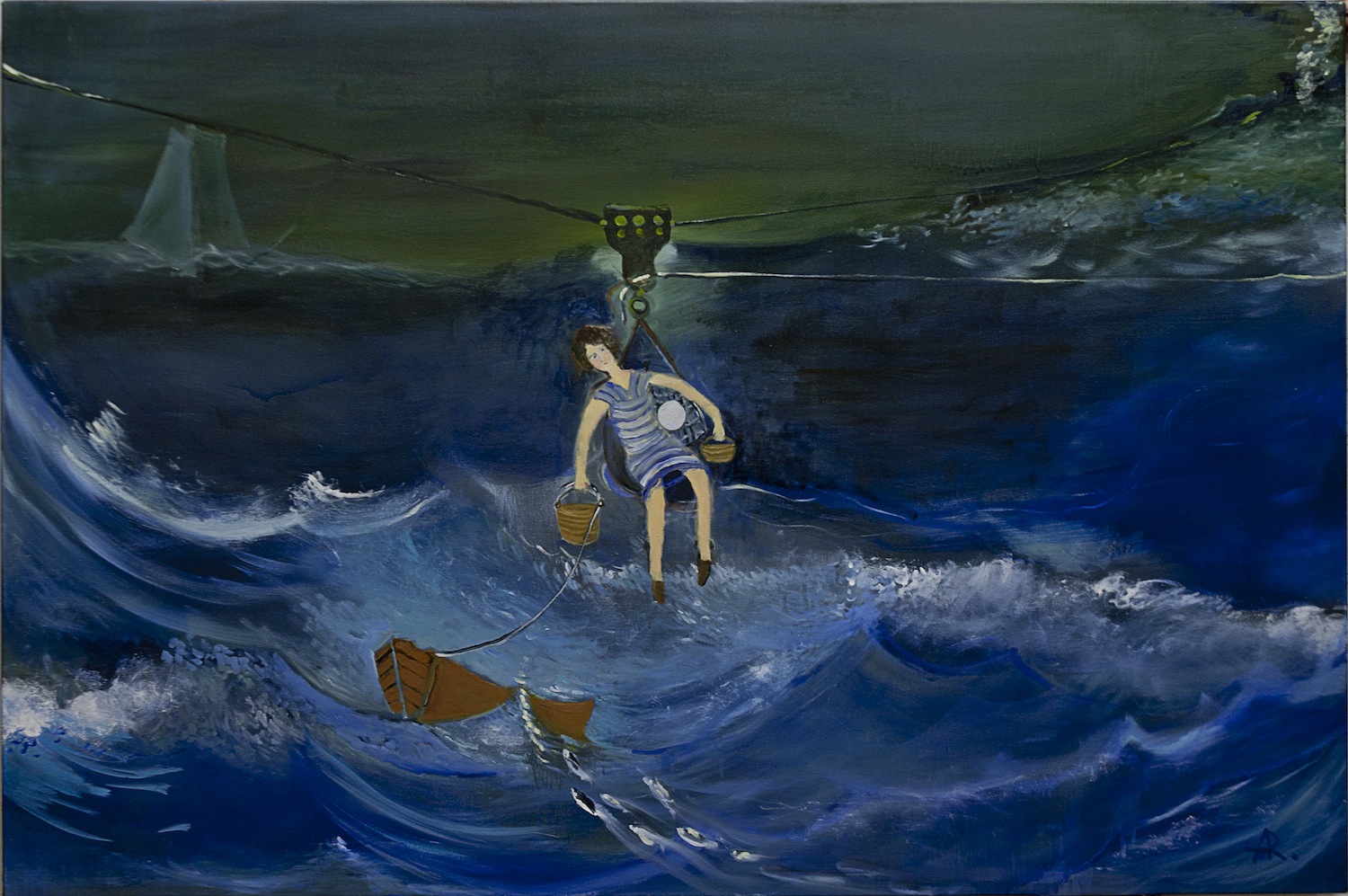
“Moving in with Winslow Homer”
How would you describe your style of painting?
In todays world “style” is usually a combination of many different styles, isms and personal history or/and an artists place in the world. Inside my work liquid layers and thick abstractly painted surfaces meet familiar landscapes, and create a place where I explore the world through the mixture of autobiography, symbolism and philosophy. I am a mix of Moscow alternative cultural scene of the 1980’s ( my visual vocabulary, environments, approach to a hidden metaphor are all coming from their ), Painting for paintings sake, Abstract Expressionism, New image painting, Fauvism , 16th-17th century Romanticism and Symbolism can all be found in my work.
My favorite artists are: Bruegel, Vermeer, Turner, Matisse, Richard Diebenkorn, Joan Snyder and Frida Kahlo. For many many years my work has been compared to Marc Chagall. I like his early work and am even really related to his first wife (Bella Rosenfeld) – my Great Grand father is her younger brother, but I don’t think that he is my main influence. However, if there is a group of artists called “Jewish Artists” I am sure I am a part of it.
How does “Transplanted” expand upon the styles and themes your work has already been exploring?
For me “Transplanted” has a seed of placing myself in the world of art. Thoughts and practice on what it is to be a painter in the 21st century. Saying that replanted artists, immigrants from the disintegrated homeland, like myself, survive against all odds
And, kind of a random one: what’s your favorite color?
I don’t think I have one favorite color. I love color. It depends on what it is for. There is one color that I strongly dislike: pink. I agree with Matisse who said that:”The use of expressive colors is felt to be one of the basic elements of the modern mentality, an historical necessity, beyond choice.”
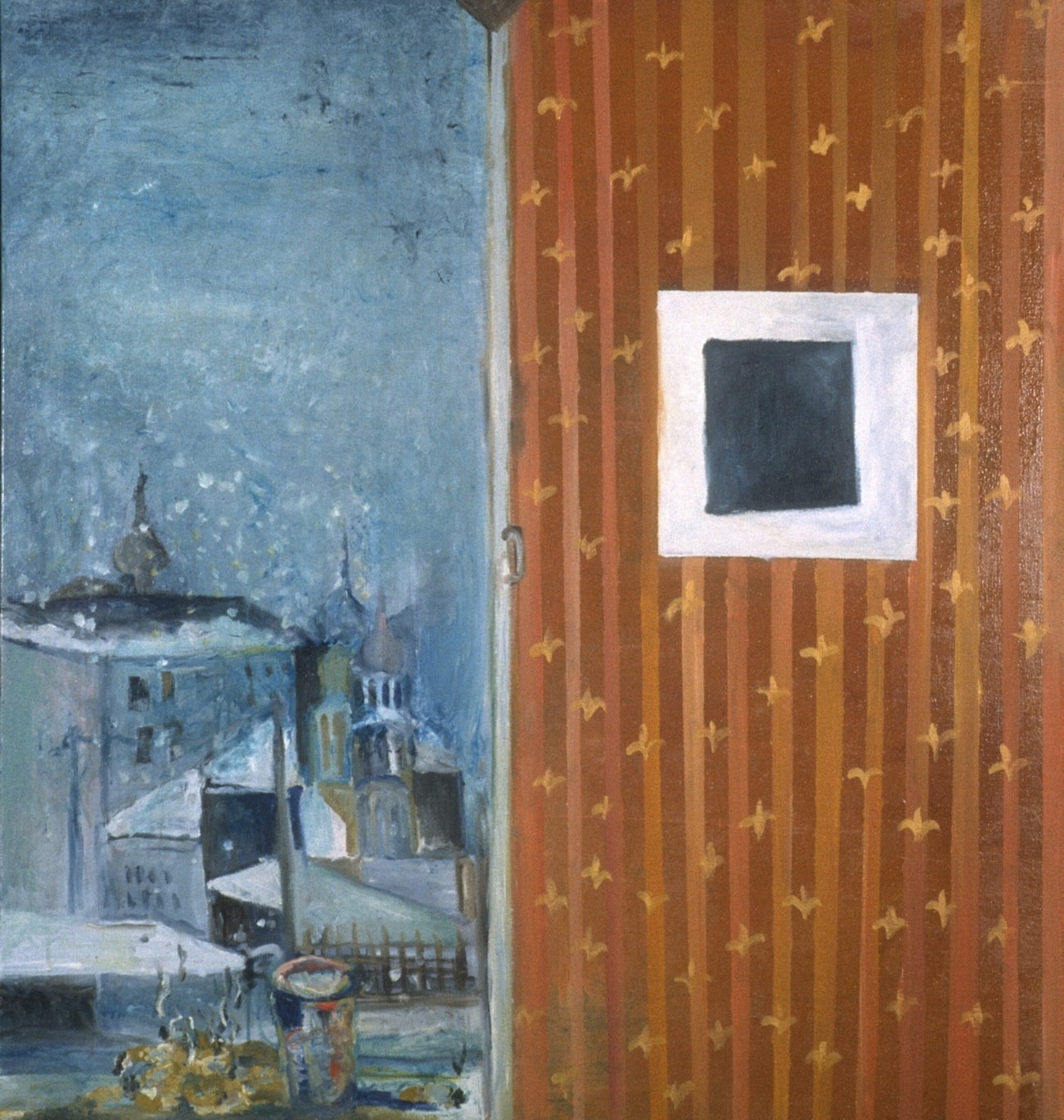
“Re-thinking Malevich in Moscow”
From Alexandra: “Re-thinking series was 15
years ago and is sort of a mother of ‘moving in.'”
See Alexandra’s website for more of her work.
“Transplanted” is on view at the Multicultural Arts Center in East Cambridge, MA from January 3 – April 8, 2013.
Mar 7, 2013 | design
When you’re a kid, a treehouse is the one place where grownups aren’t in charge. If you’re a girl it’s no boys allowed and vice versa. Only those deemed trustworthy are allowed up to the sacred space so that everyone can feel safe enough to discuss their hopes for the future – even if that only includes trying to get out of going to school tomorrow.
But treehouses become more than that when Kobayahsi Takashi makes them – a professional treehouse architect, he’s traveled around Japan and the world creating miniature spaces high up in the branches, brought to life by the fact that the very thing supporting them is alive. He writes, “…everywhere I’ve been, I’ve seen reflected in these largest and oldest of living beings the same nameless light that I’ve struggled to maintain within myself for so many years, the one that no one could tarnish and that never seemed to disappear. That comfort, that sense of calm, is something I’d like to share with as many people as possible. And it is with that in mind that I will continue with the one-of-a-kind rush that is treehouse creation, all the while carrying out my own personal dialogue with their hosts.”

Takashi is a member of the Tree People, both a company and organization that stands with trees and builds off them. Their website reads, “We who build these structures are not architects; our aim rather, through art and free expression, is to break down the feeling of separation that exists between humans and nature.”
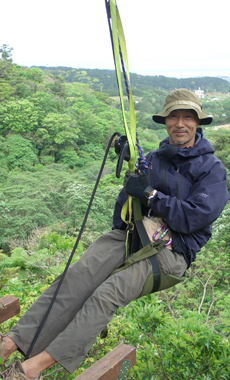
Kobayahsi Takashi
I especially love this glass treehouse nestled in an Okinawa forest – just a little dome that transforms people into birds, letting them soar up high in the branches; plenty of windows for fresh air and with opening at the top towards the sky. This photograph was taken at just the right angle too – its obvious why they selected this tree as each side of its arms open wide, embracing and balancing the little glass dome held within.
See more Tree People treehouses in their online gallery.
Takashi also wrote a book called “Treedom” if you’re interested.











